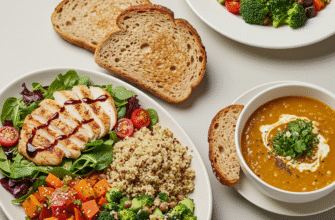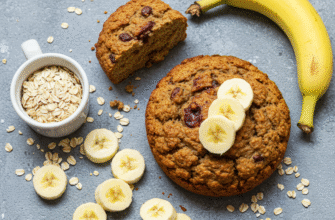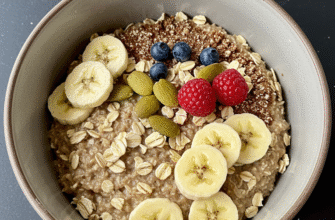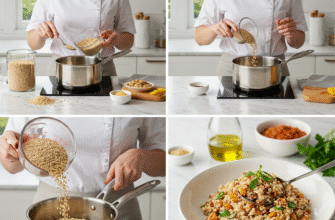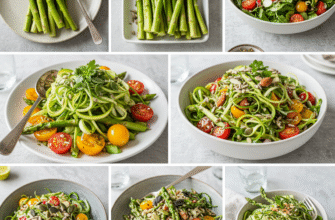Finding ways to cut back on sodium doesn’t have to feel like a massive dietary overhaul. Often, it’s the small, consistent changes that make the biggest difference to how you feel and your overall eating patterns. Sodium, mostly consumed as salt, hides in many foods we don’t even think of as salty. While it’s an essential mineral, most people consume far more than needed, largely from processed foods and restaurant meals rather than the salt shaker itself. Making a conscious effort to reduce intake can be a positive step for anyone looking to be more mindful about their diet. The good news is, it’s simpler than you might think, and your taste buds can definitely adapt over time.
Take Control in Your Own Kitchen
One of the most effective strategies for managing sodium is simply cooking more meals at home. When you prepare your own food, you are the chef. You decide exactly what goes into the pot, pan, or bowl. Restaurant meals and pre-packaged foods are notorious for high sodium levels, often used for flavour enhancement and preservation. Cooking from scratch, even just a few more times a week, puts the power back in your hands. You can directly control the amount of salt added, or better yet, experiment with other flavour builders.
Start with simple recipes. You don’t need to become a gourmet chef overnight. Focus on dishes based around fresh ingredients. Think roasted vegetables, simple grilled chicken or fish, hearty salads, or homemade soups. When you do use salt, measure it rather than pouring freely. You might be surprised how little you actually need when using fresh, flavourful ingredients. Gradually reducing the amount you add allows your palate to adjust without feeling deprived.
Become a Savvy Label Reader
The Nutrition Facts label is your best friend when navigating the grocery store aisles. Make it a habit to glance at the sodium content before putting an item in your cart. Pay close attention to the serving size listed at the top. All the information on the label, including the sodium amount (usually listed in milligrams, or mg), refers to that specific serving size. If you typically eat more than one serving, you’ll need to multiply the sodium content accordingly. This can be a real eye-opener, especially with snacks and beverages.
Look for the Percent Daily Value (%DV) for sodium. A helpful rule of thumb is that 5% DV or less of sodium per serving is considered low, while 20% DV or more is considered high. Comparing similar products side-by-side using the %DV can help you quickly identify the lower-sodium option. Don’t just look at obviously salty foods; check labels on bread, cereals, sauces, dressings, and even sweet baked goods – sodium hides everywhere!
Remember to always check the serving size listed on the Nutrition Facts panel first. The sodium amount shown is only for that single portion. Many packages contain multiple servings, so calculate accordingly if you plan to eat more. Using the % Daily Value can also provide quick guidance: aim for foods with 5% DV or less for sodium per serving when possible.
Also, scan the ingredient list. Salt can appear under various names. Look out for words like “sodium,” “salt,” “soda,” and “Na” (the chemical symbol for sodium). Ingredients are listed by weight, so if salt or a sodium-containing compound appears near the top of the list, the product likely contains a significant amount.
Embrace Freshness Over Processing
Highly processed foods are generally the biggest contributors to sodium in the average diet. Think frozen dinners, packaged snacks like chips and pretzels, cured meats (like bacon, sausage, deli meats), canned soups, and instant noodles. Manufacturers often add substantial amounts of sodium to improve taste, texture, and shelf life.
Whenever possible, opt for fresh or minimally processed options.
- Choose fresh fruits and vegetables instead of canned versions whenever you can. If using canned, look for “no salt added” options.
- Select fresh cuts of meat, poultry, and fish over processed, marinated, or cured varieties. Deli meats, sausages, and bacon are typically very high in sodium.
- Cook grains like rice, pasta, and oats from scratch instead of relying on flavoured instant mixes, which often contain added salt and seasonings.
- Snack on unsalted nuts, seeds, fresh fruit, or plain yogurt instead of salty chips or crackers.
The Simple Rinse Trick
Here’s an incredibly easy tip: rinse canned goods. Foods like canned beans (kidney, black, chickpeas), lentils, and vegetables are often packed in a brine solution that contains a fair amount of sodium. Simply pouring the contents into a colander or sieve and giving them a good rinse under cold running water for about 30 seconds can wash away a surprising amount of that surface sodium – sometimes reducing it by up to 40%! Pat them dry before using in your recipes. It’s a small step that takes barely a minute but offers a noticeable reduction.
Seasoning Beyond the Salt Shaker
Salt’s primary role in cooking is flavour enhancement, but it’s far from the only way to make food taste delicious. Explore the wide world of other seasonings to liven up your meals without relying heavily on sodium.
Herbs and Spices
Fresh or dried herbs and spices add incredible depth and complexity.
- Herbs: Basil, parsley, cilantro, mint, dill, rosemary, thyme, oregano, chives. Experiment with combinations!
- Spices: Black pepper, cumin, coriander, paprika (sweet or smoked), chili powder, garlic powder (not garlic salt!), onion powder (not onion salt!), turmeric, ginger, cinnamon, nutmeg.
Acids
Acidity can brighten flavours much like salt does. Squeeze fresh lemon or lime juice over finished dishes, especially vegetables, fish, and chicken. Vinegars – such as balsamic, red wine, apple cider, or rice vinegar – are fantastic in dressings, marinades, and sauces. They provide a tanginess that can reduce the perceived need for salt.
Aromatics
Garlic and onions (fresh, roasted, or sautéed) form the flavour base for countless cuisines for a reason. Shallots, leeks, and scallions also contribute significant savoury notes without adding sodium.
By layering these different types of flavour enhancers, you create dishes that are exciting and satisfying, proving that low-sodium doesn’t mean low-flavour. Be bold and experiment!
Navigating Dining Out
Eating out can be challenging when you’re watching sodium, but it’s not impossible. Planning ahead and making smart choices can help.
Look at menus online beforehand if possible. Many chain restaurants now provide nutrition information on their websites, allowing you to identify lower-sodium options before you even arrive. Look for keywords like “grilled,” “steamed,” “baked,” or “roasted” rather than “fried,” “crispy,” “breaded,” “pickled,” “smoked,” or dishes described as being in a heavy sauce or gravy, as these often signal higher sodium content.
Don’t be afraid to make special requests. Ask for sauces, dressings, and gravies to be served on the side so you can control how much you use. Request that your food be prepared without added salt or MSG (monosodium glutamate, another source of sodium). While not all kitchens can accommodate every request, it never hurts to ask politely.
Be mindful of portion sizes, which are often very large in restaurants. Consider splitting an entrée with a dining companion or asking for half of your meal to be boxed up before it even reaches the table. Simple swaps like choosing a side salad (with dressing on the side) or steamed vegetables instead of fries can also make a difference.
Patience and Gradual Change
Your taste for salt is learned, and thankfully, it can be unlearned or at least adjusted. If you drastically cut salt overnight, food might initially taste bland. The key is gradual reduction. Slowly decrease the amount of salt you add when cooking and choose lower-sodium products more often. Over several weeks, your taste buds will adapt, becoming more sensitive to the natural flavours in food and requiring less salt to feel satisfied. Be patient with yourself and celebrate the small victories along the way. Reducing sodium is a marathon, not a sprint, and finding enjoyable, sustainable ways to do it is crucial for long-term success.
“`

